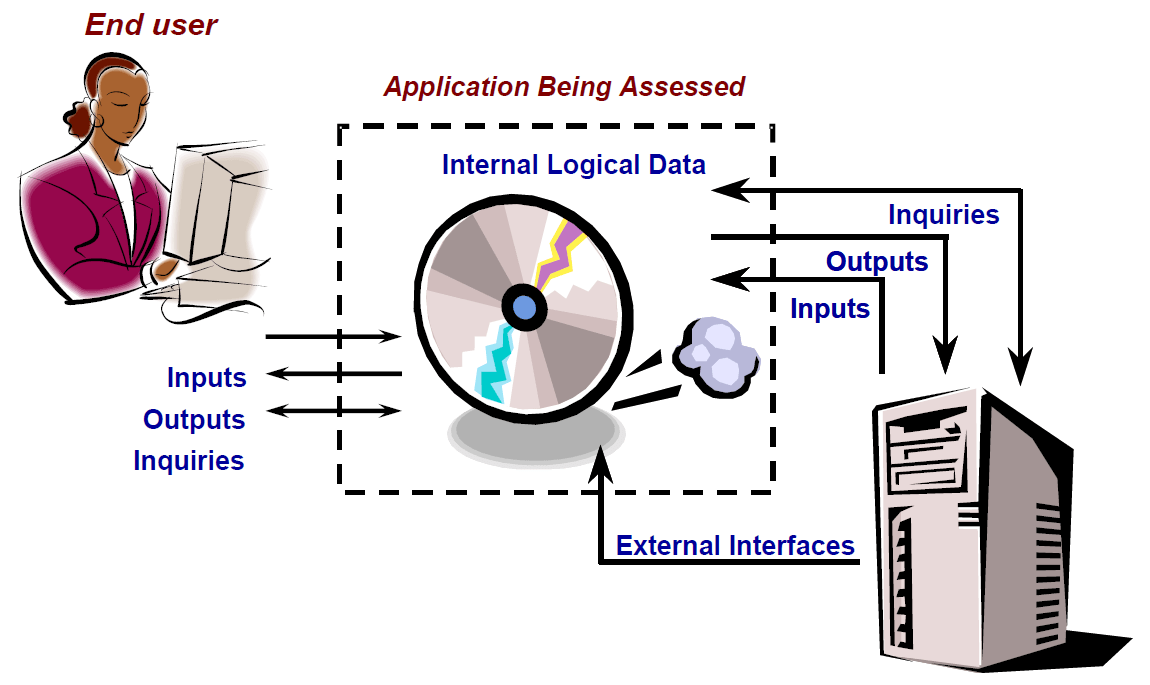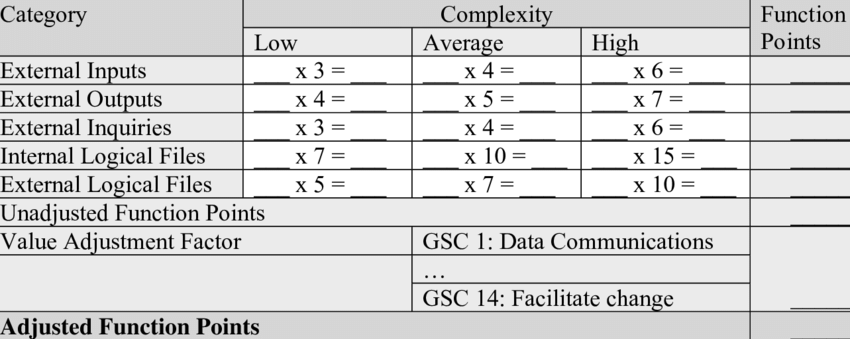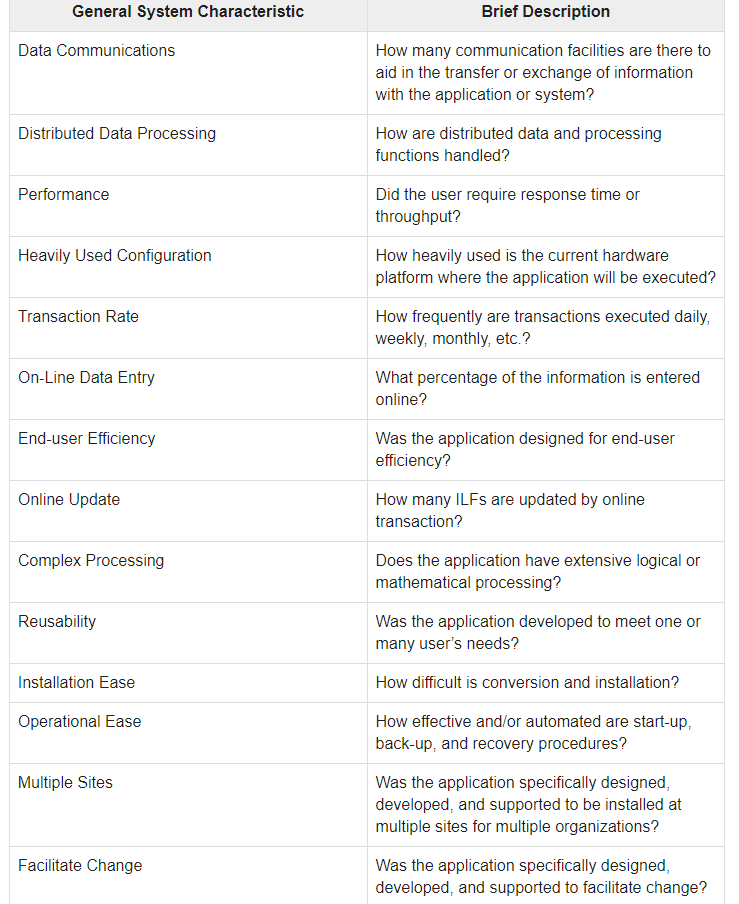What is it?
FPA, which stands for functional point analysis, is a method used in Software Measurement to measure the functional size and complexity of the software from the perspective of the user. It’s based on the requests and responses that the user receives, counting it in terms of function points, which is a dimensionless number.
What it does, not how it's built.
FPA measures the complexity of what the software does, not the complexity or effort needed to build the software. Because of that, it’s not used for projects which are on the initial stages of development.
FPA concepts
FPA establishes names for components and process used in the system:

-
Boundary
Refers to the limit where the FPA will apply in the system, e.g., just a part of the system, or will include the entire system and other external services?
-
External Inputs — EI
All data that enters the system through external sources.
-
External Outputs — EO
All data that leaves the system to external destinations.
-
External Inquiries — EQ
All data that enters and leave the system in response to any user queries.
-
Internal Logical Files — ILF
Logical groups of data which are generated and maintained inside the system.
-
External Interface Files — EIF
Logical groups of data that are used in system, but are stored and maintained outside of it.
Step-by-step
FPA is a lengthy process, but the overall view of it is to classify each component of the system, assign a weight, and then calculate an adjustment factor for the complexity of the system.
Classify components and assign weights
Each component of a system, each user interaction, data processing, and so on, should be taken into consideration. They need to be classified into one of the types shown above, and then assigned a weight depending on its complexity, ranging from simple, average, and complex.

Calculate Unadjusted Function Points - UFP
Multiply the count of each type by its given weight and sum the results. This will result in UFP, which stands for unadjusted function points:
Determine the adjustment factor
VAF, which stands for Value Adjustment Factor, is used to adjust UFP by considering general characteristics of the system, so that it’s complexity estimate is more reliable. These characteristics are standardized and called GSC, which stands for General System Characteristics, and each can be given a score from 0 to 5, depending on how applicable it is to the system in question. 0 represents weak influence, while 5 represents strong influence:

Calculate TDI and VAF
With the general characteristics defined, we can calculate TDI, which stands for Total Degree of Influence. TDI will be the sum of all points of the fourteen influences. Then the Value Adjusment Factor, VAF, can be calculated:
Calculate Adjusted Function Points - AFP
With all the previous values, AFP can be calculated, which is the Adjusted Function Points, the final result of a functional point analysis:
Estimating effort
It’s possible to determine function points per month of a team or a developer, using historical data, resulting in a productivity rate. With this productivity rate, one can estimate the effort of a project by applying FPA to it and using the productivity rate to discover the effort required for the project. Then, one could even estimate the cost needed: